[Disclosure: Please assume all outbound links may in some cases provide site-sustaining revenue from ads or referrals (with never any extra costs to you). See footer for more details. Thank you]
Home > Household Chemical Encyclopedia > General / Closet Chemical Hazards
General Household Chemicals: Skeletons in Your Closets?
The below general household chemicals and products are commonly found in closets and elsewhere throughout most homes. Ingredient and safety information is lower down this page.
Your use, storage, and disposal of many of these household hazardous waste sources may contribute significantly to poor indoor air quality problems and environmental damage.
The advice here will help you reduce those risks.

Is Your Home Full of Chemical Products and Household Hazardous Wastes?
If you are at all interested in creating a healthy home, I strongly recommend you think about how you can eliminate or greatly reduce your use and inventory of most of the below general household chemical products.
Source elimination will always be the best solution, where feasible.
For those chemicals that you do use, try to store and use them in well ventilated areas, preferably outside and far away from living spaces.
Even in storage, most chemical product containers will slowly "off-gas" trace amounts of volatile vapors that can accumulate indoors over time. So storing many containers of chemical products inside is a bad idea, yet a common practice.
These released "volatile organic compounds" (VOCs) are a common contributor to Sick Building Syndrome and they may cause general indoor allergy symptoms and cause lung disease.
Chemical air pollutants in your home may also increase your long-term risk for organ damage and chronic diseases such as prostate or breast cancer.
|
|
When you use or apply household chemical products to indoor surfaces, there is usually a sharp spike in indoor air concentrations of dangerous chemicals.
Indoor air quality tests have proven that something as simple as applying nail polish, spraying hair spray, or using paint or adhesive can easily produce concentrations of air toxins that are thousands of times higher than recommended maximum exposure limits.
These elevated chemical levels will often gradually tail off after use of the product, but levels can remain dangerously high for days or weeks in most modern air-tight homes.
Accumulation of even trace amounts of harmful chemical toxins often creates a serious indoor air hazard over time. Unfortunately this problem is all too common in most poorly ventilated homes.
No one knows better how real this modern problem is than those people who have extreme sensitivity to even low levels of chemical toxins.
Someone diagnosed with the condition known as Multiple Chemical Sensitivity (MCS) knows all to well how polluted most indoor air is, not just from the use of household chemical products, but also from structural sources that are often beyond our practical control.
Most of us truly live in homes of man-made chemical-based compounds.
Green building using sustainable materials composed of low toxicity compounds is a fast growing trend. However, older homes and many newer homes still contain a plethora of materials that cause building-related illnesses.
These toxin sources are so widespread, it makes it virtually impossible to permanently eliminate all the residual particles and volatile organic compounds from inside air.
Air contaminants steadily vaporize or abrade off of surfaces and furnishings inside and are transported by air drafts, HVAC ventilation, and by the activities of occupants within the home.
These structural materials, such as plywood, are difficult to access and removal is usually not feasible due to the high costs involved with such drastic renovations.
Examples of permanent sources of possible chemical contaminants include:
- the paint on our walls
- the furniture in our rooms
- household appliances
- the pesticides sprayed in and around our homes for termite treatment
- fungicides incorporated into products for mold and mildew control
- fire retardants incorporated for anti-flammability
- insulation in our attics, walls, and floors
- chemicals used to manufacture and treat the structural components of our homes such as dry wall, particle board, lumber, caulking, and carpeting.
In order to reduce these multiple household chemical hazards from our indoor air we must take a multi-staged approach involving the use of:
- Source Control - don't add to the problem by over-using chemical products. Buying less is best. If you must buy, then try green cleaners, and other less toxic products.
- Substitute store-bought products by making your own toxin-free alternatives. On my other website I have a growing and extensive FREE list of frugal home-made non-toxic alternative/natural household product recipes for many types of the most commonly used cleaning, laundry, beauty, pet, garden, automotive, and maintenance items.
- Ventilation - fresh air increases oxygen supply and dilutes indoor air pollutants. Air your house out frequently when weather conditions and outdoor allergen levels allow for it.
- Room Air Cleaning via High Efficiency Home Air Purifiers - all are definitely not created equal though. Learn more about finding the Best Air Purifier capable of HEPA/Gas Phase filtration of extremely fine chemical vapors and particles.
Learn more about other causes of indoor air quality problems, or about the safe use, storage, and disposal of household products and other common hazardous household substances.
Safety Information for the Most Common General Household Chemicals
Aerosols
Aerosol sprays (e.g., furniture polish, deodorant, and air freshener) contain an active ingredient and a liquid or gaseous propellant that is packed under at least 40 pounds of pressure per square inch. These pressurized aerosol containers are explosive and may be flammable. The actual product propelled by the aerosol, such as some oven cleaners, can be corrosive or poisonous, therefore requiring great care.
Aerosol sprays should be used with care. The fine particles emitted from aerosol sprays are easily breathed deeply into the lungs and quickly absorbed into the bloodstream. Thus, a chemical that is harmless to your skin may become extremely dangerous if inhaled as a mist. Acute symptoms include headache, nausea, dizziness, shortness of breath, eye and throat irritation, skin rash, burns, lung inflammation, and liver damage. If spray is misdirected, chemical burns and eye injury can also occur. Intentionally inhaling aerosol gases for kicks, sometimes called "sniffing" or "huffing," has resulted in the death of several young Americans.
An aerosol container should never be heated significantly above room temperature because it can explode. Storage of cans in direct sunlight, car trunks, and near furnaces, stoves, and ovens can result in explosion. When heated, aerosol gases can turn into toxic gases including fluorine, chlorine, chloride or hydrogen fluoride, or phosgene (military nerve gas). Breathing these vapors can be very harmful to you.
Significant environmental impact from aerosol sprays led to alterations in their design. Several of the Chlorofluorocarbons (CFCs) that have been used in aerosol sprays in the past reacted with and reduced the ozone layer in the upper atmosphere. Reduction in the ozone layer and the resulting rise in ultraviolet radiation reaching the earth can result in increased rates of skin cancer, skin aging, eye damage, and Vitamin D poisoning. Before buying or using aerosol sprays, weigh their convenience against their potential health and environmental hazards.
Learn more about safe use, storage, and disposal of Aerosol Products.
Back to Top / Back to List
All-purpose Cleaners
The ingredients in all-purpose cleaners are a combination of detergents, grease cutting agents, and possibly solvents and disinfectants. These products may contain one or more of the following hazardous ingredients: Ammonia, ethylene glycol monobutyl acetate, sodium hypochlorite, and trisodium phosphate. Depending upon the ingredients contained in the particular cleaner, they can be mildly to extremely irritating to the skin, eyes, nose, and throat, and corrosive if swallowed. Chronic irritation may occur from repeated use.
Do not mix ammonia-based cleaners with bleach-based cleaners. Hazardous fumes will result! Cleaners that contain phosphates present a water pollution hazard.
Use: Wear gloves. Make sure that the ventilation is adequate. Do not mix different cleaners together as toxic fumes may result.
HAZARDOUS HOUSEHOLD CHEMICAL INGREDIENTS and Possible Effects:
AMMONIA - Fumes irritate eyes and lungs; can cause burns or rashes on skin; can produce deadly chloramine gas if mixed with chlorine containing products.
ETHYLENE GLYCOL MONOBUTYL ACETATE - Poisons animals, who are attracted to sweet smell; can cause damage to internal organs through skin absorption; inhalation can cause dizziness.
SODIUM HYPOCHLORITE - Corrosive to skin and mucous membranes; fumes irritating.
Back to Top / Back to List
Aluminum Cleaners
Many aluminum cleaners contain hydrofluoric acid which is extremely corrosive and toxic. Hydrofluoric acid is extremely dangerous! Upon contact, it destroys the flesh down to the bone as the fluoride ion continues to act until it is neutralized by a calcium store. The pain from burns may be delayed for several minutes to several hours, depending upon concentration. During this time, the acid in the aluminum cleaner can burn deeply into the tissue, causing severe burns and possible damage to muscles, ligaments, and bone. Low concentrations in the eyes can cause intense irritation; high concentrations, immediate blindness.
I can attest to the extreme dangers of Hydrofluoric Acid because we use it on a daily basis in our Inorganic labs. Hydrofluoric Acid and Fluoboric or Fluoroboric Acid are some of the few acids which will dissolve the silica and alumina based chemical catalysts we analyze. We take special precautions when using Hydrofluoric Acid because unlike the other acids we use, if enough Hydrofluoric Acid contacts the skin it can be deadly! Many have died from relatively small skin surface area exposure to Hydrofluoric Acid. It's an extremely painful way to die!
Throughout our labs we have easily accessible vials of Calcium Gluconate which is a cream to be immediately applied upon any skin contact with Hydrofluoric Acid. Calcium Gluconate quenches the reaction of Hydrofluoric Acid with the body's calcium. It's an essential item to have around when using Hydrofluoric Acid because if exposure to Hydrofluoric Acid occurs a pernicious chain reaction ensues which affects tissue and blood eventually resulting in severe damage and likely death.
Because our labs use this deadly acid on a daily basis we have notified the authorities so they can be prepared in the event of an emergency due to Hydrofluoric Acid exposure. The local emergency response teams, our own first responder emergency management teams, and the local hospitals have all been equipped with special injectable antidotes and the Calcium Gluconate cream which counteract the effects of Hydrofluoric Acid exposure.
STAY AWAY FROM HYDROFLUORIC ACID FOLKS. IT'S A KILLER!
Use: Do not use products with hydrofluoric acid. If the aluminum cleaner ingredients are not on the label, you cannot assume hydrofluoric acid is not in the product. If you are using a product which contains this ingredient, protect all exposed skin in addition to wearing protective gloves, safety goggles, and a respirator with an acid gas cartridge.
Storage: Store away from children.
Disposal: If aluminum cleaner is in liquid form take it to a household hazardous waste collection. If collection is not available, then flush down the drain with plenty of water. If you are on a septic tank or lagoon, dispose of small quantities over a number of days. If cleaner is in solid paste form and has completely hardened, it may then be thrown in the trash destined for the landfill.
Back to Top / Back to List
Air Fresheners
Air fresheners work in one of the following four ways: by interfering with your ability to smell by way of a nerve-deadening agent; by coating your nasal passages with an undetectable oil film; by covering up one smell with another; and (rarely) by breaking down the offensive odor. Despite their name, air fresheners do little to freshen the air. Aerosol fresheners can be harmful to lungs if inhaled in high concentrations or for prolonged periods of time. Solid fresheners may be poisonous if eaten by children or pets.
Use: If freshener is in aerosol form, do not breathe fumes. Avoid skin contact. Use only in well-ventilated areas.
Storage: Keep out of the reach of children and pets. Store away from heat or flame.
Disposal: It is best to use up air freshener as it was intended. For unwanted portions of solid air freshener, allow to evaporate by exposing it to the air.
Alternatives: There are several non-toxic ways to freshen the air in your home.
HAZARDOUS HOUSEHOLD CHEMICAL INGREDIENTS and possible effects:
Formaldehyde - A suspected carcinogen and a strong irritant to the eyes, throat, skin and lungs.
PETROLEUM DISTILLATES - Irritates skin, eyes, respiratory tract; may cause fatal pulmonary edema; flammable.
P-DICHLOROBENZENE - Vapor irritating to skin, eyes and throat, causes liver damage in animal studies.
AEROSOL PROPELLANTS - Either associated with brain damage or highly flammable.
Back to Top / Back to List
Dry Cell Batteries
Dry cell and disc or button batteries are used in flash lights, radios, hearing aids, watches, cameras, calculators, toys, and other items in the home. These batteries may contain zinc, Lead, alkalines, Mercury, nickel, cadmium, silver, and electrolytes. If batteries leak or explode the chemical substances contained in these batteries can cause internal and external burns and irritation. Batteries which explode can spew their contents on unsuspecting victims. There are two primary reasons that batteries explode: if an attempt is made to recharge non-rechargeable batteries, gases may build up and generate enough pressure to explode the battery; and batteries which are thrown into a fire, burned in a barrel, or otherwise incinerated can explode. Batteries which are chewed on or punctured can also leak.
Discarding batteries poses a clear environmental danger. Batteries contain heavy metals, such as silver, nickel, cadmium, lead, mercury, lithium, manganese, and zinc, which can accumulate and concentrate in waterlife, wildlife, and humans. An example of the danger posed by batteries is that one mercury battery contained in six tons of garbage exceeds the allowable limit for mercury in solid waste as established by the federal government.
Learn more about the safe use, storage, and disposal of Dry Cell Batteries.Back to Top / Back to List
Carpet Cleaner
HAZARDOUS HOUSEHOLD CHEMICAL INGREDIENTS and Possible Effects:
PERCHLOROETHYLENE - Fumes are carcinogenic and acutely toxic, cause dizziness, sleepiness, nausea, loss of appetite and disorientation.
NAPHTHALENE - Damages liver; prolonged vapor exposure has led to cataract formation.
These ingredients are most commonly found in commercial "spot removers", rather than water-based detergent products or rub-in cleansing powders.
Back to Top / Back to List
Floor Cleaners
HAZARDOUS HOUSEHOLD CHEMICAL INGREDIENTS and Possible Effects:
PINE OIL - Irritates eyes and mucous membranes.
PETROLEUM DISTILLATES - Irritates skin, eyes, respiratory tract; may cause fatal pulmonary edema; flammable.
NAPHTHAS - Inhalation causes drowsiness, headache, coma and cardiac arrest; irritate eyes, throat and skin.
Back to Top / Back to List
Furniture Cleaners
HAZARDOUS HOUSEHOLD CHEMICAL INGREDIENTS and Possible Effects:
PETROLEUM DISTILLATES - Irritate skin, eyes, respiratory tract; may cause fatal pulmonary edema; flammable.
OIL OF CEDAR - Central Nervous system depressant; may induce spontaneous abortion.
Back to Top / Back to List
Furniture Polish
There are three general types of commercial furniture polish: solvents, emulsions, and aerosol sprays. Each type contains specific chemicals which aid in the application of the wax or oil to the furniture surface. Solvent polishes use a chemical solvent to dissolve the oil or wax into a liquid form. Emulsion polishes suspend the oil or wax in a liquid, usually water. Aerosol sprays are solvents or emulsion types packed under pressure.
Most polishes are flammable. Furniture polish may contain one or more of the following substances: Ammonia, naphtha, nitrobenzene, petroleum distillates, and phenol.
The health dangers most often associated with furniture polish are inhalation of fumes or vapors (especially from aerosols) and poisoning from ingestion. Polishes that look drinkable, like strawberry soda or milk, are especially tempting to children.
Use: When using furniture polish you should wear gloves, avoid skin contact with the polish, and provide adequate ventilation. Avoid polishes or stains with nitrobenzene.
Storage: Store away from children and sources of flame.
Disposal: Unused or unwanted portions of furniture polish which contain petroleum distillates or nitrobenzene should be held for a hazardous waste collection rather than disposing of them in the trash. The best way to avoid a disposal dilemma is to fully and carefully use the product up.
Back to Top / Back to List
Insect Repellent
As the name indicates, insect repellents deter mosquitoes, gnats, and other insects from biting and annoying the user. Almost every home has some form of these toxic general household chemicals.
Common active ingredients in repellents include: Diethyl toluanide, Dimethyl phthlate, Ethyl hexanediol, Indalone, Di-n-propylisocinchoronate, Bicycloheptene dicarboximide, and Tetrahydro furaldehyde.
The literature reports at least five cases of toxic exposures due to excessive skin absorption of diethyltoluamide (DEET), a common ingredient in twelve of the fifteen insect repellents examined by Consumers Union.
Symptoms in all cases included loss of coordination, anxiety, behavioral changes, and mental confusion.
Liver and kidney damage have been linked to indalone and ethyl hexanediol.
Long-term skin application of indalone has caused liver and kidney damage in animals.
Ethyl hexanediol may cause liver and kidney damage.
Ingestion of large doses of insect repellent may cause loss of coordination, central nervous system depression, and possibly coma.
Use: Use sparingly. Avoid contact with eyes, mouth, and sensitive skin.
Storage: Keep out of the reach of children.
Disposal: Insect repellents are pesticides. With the exception of insect repellents containing banned or otherwise restricted pesticides, the best way to get rid of them is to use them up as intended. Insect repellents should never be burned, buried, mixed together, poured on the ground, dumped in the water, or poured down the drain. Leftover portions of all pesticides, including insect repellents, must be disposed of by a licensed hazardous waste handler or through a professional household hazardous waste collection.
HAZARDOUS HOUSEHOLD CHEMICAL INGREDIENTS and Possible Effects:
BUTOPYRONOXYL - Can cause mild necrosis in liver and kidney.
CIMETHYL PHTHALATE - Ingestion causes central nervous system depression; not absorbed by the skin.
DIETHYLTOLUAMIDE - Irritant to sensitive skin and respiratory tract tissues.
Back to Top / Back to List
Shoe Polish
Many commercial products contain either Trichloroethylene, methylene chloride, or nitrobenzene. These suspected human carcinogens can be easily absorbed through your skin.
Use: Wear gloves when polishing or cleaning shoes. After polishing your shoes, be sure they are dry before wearing. Never wear shoes that are not absolutely dry if you are drinking and never drink alcoholic beverages while polishing shoes. The presence of alcohol in the system heightens the toxic effects of nitrobenzene.
When toxic quantities of nitrobenzene are absorbed, the person shows a bluish tinge in the fingernail beds, lips, ear lobes, and tongue. Results can be fatal. Unfortunately, most shoe polishes do not list their ingredients.
Storage: Keep out of reach of children.
Disposal: Use up as intended or give it to someone who will. Take unused portions to a hazardous household waste collection center. If a collection center is unavailable, place it in the trash.
Back to Top / Back to List
Pet Supplies
(Flea Collar, Shampoo, Spray, Powder)
HAZARDOUS HOUSEHOLD CHEMICAL INGREDIENTS and Possible Effects:
ORGANOPHOSPHATES - Carcinogenic in rats, teratogenic in chick embryos; affects nervous system; acutely toxic causing headache, dizziness, twitching, nausea.
CARBAMATES - Carcinogenic in rats; mutagenic; teratogenic in dogs and mice, affects nervous system.
Back to Top / Back to List
Window and Glass Cleaner
General household chemicals such as window and glass cleaner commonly contains isopropyl alcohol or Ammonia, water, and coloring. It may be mildly irritating to the eyes, skin, nose, and throat.
Use: Always use window and glass cleaners in a well-ventilated area.
Storage: Keep out of reach of children.
Disposal: Unused or unwanted portions of window or glass cleaner should be flushed down the drain with plenty of water.
HAZARDOUS HOUSEHOLD CHEMICAL INGREDIENTS and Possible Effects:
AMMONIA - Fumes irritate eyes, lungs; can cause burns or rashes on skin.
ISOPROPANOL - Irritates mucous membranes; ingestion results in drowsiness, unconsciousness and death.
Back to Top / Back to List
Need More Information?
 | Site Search of Home Air Purifier Expert.com |



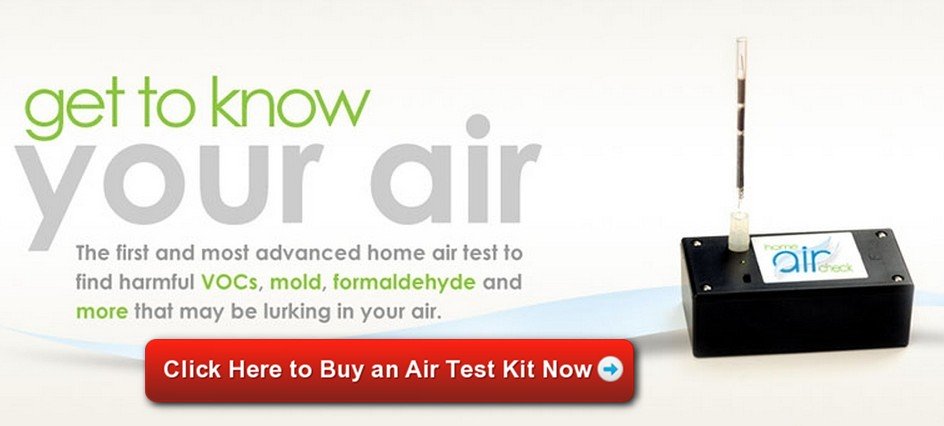
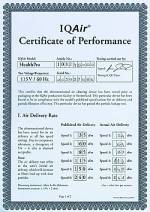
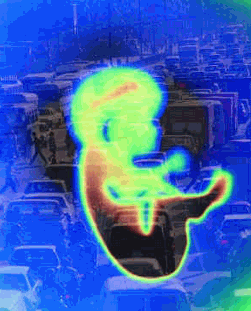
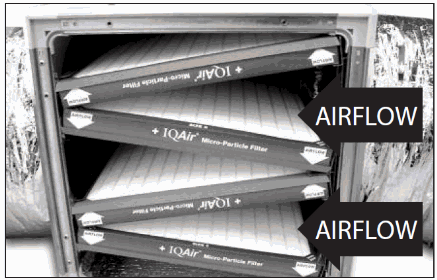
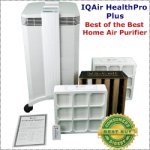
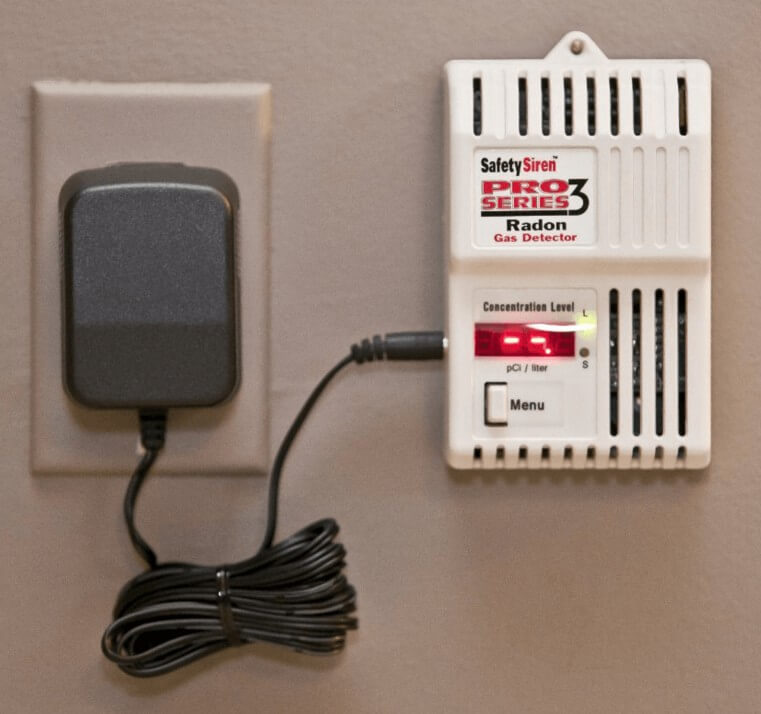
New! Comments
Have your say about what you just read! Leave me a comment in the box below.